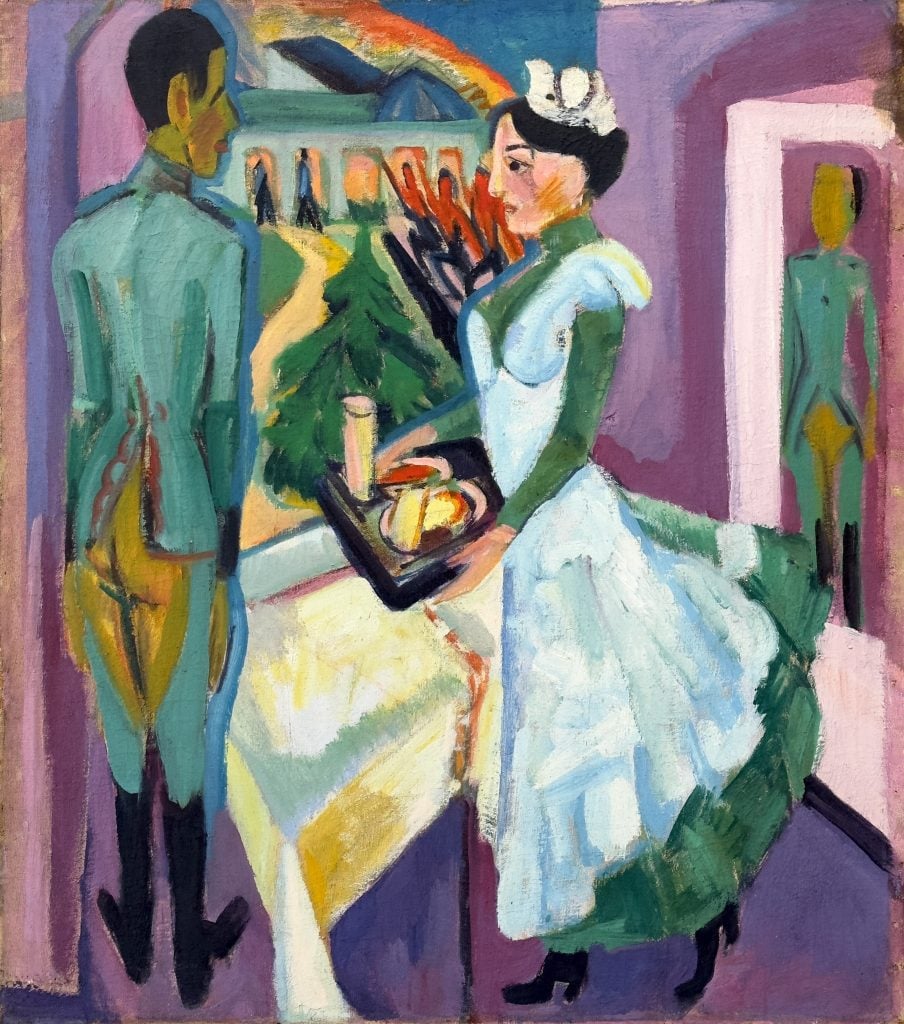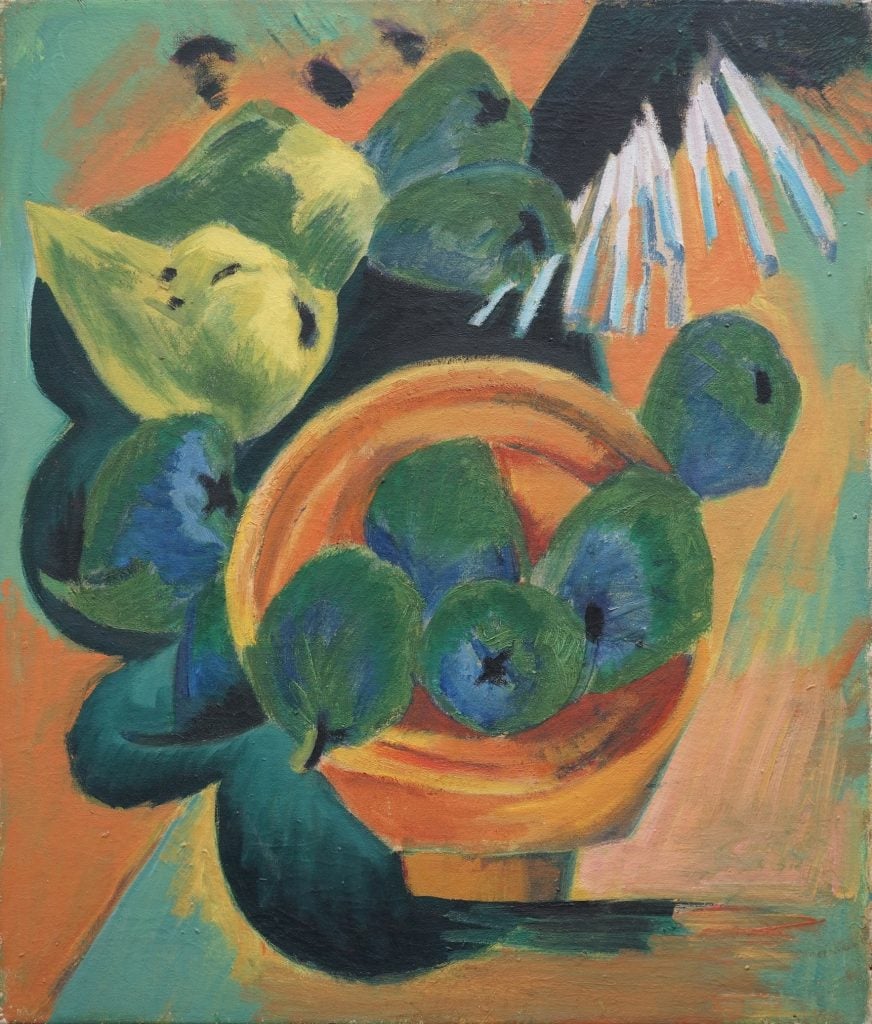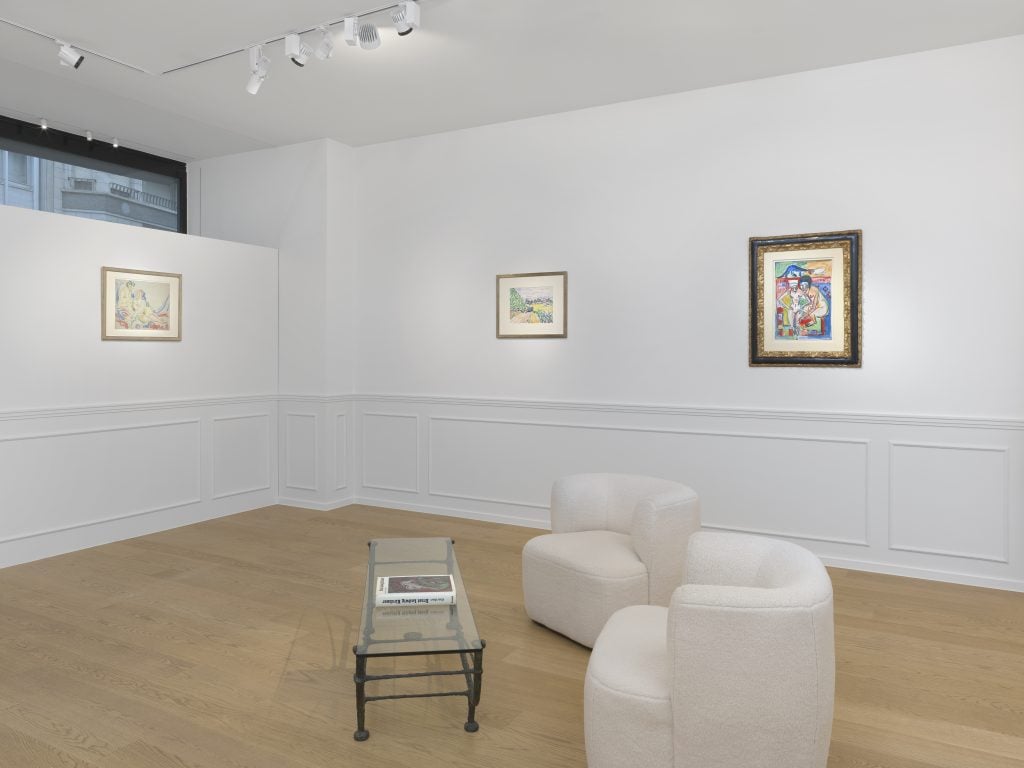Gallery Network
German Expressionist Ernst Ludwig Kirchner’s Innovative Oeuvre Finds the Spotlight in Geneva
A suite of six works by Kirchner are on view with Bailly Gallery, Geneva.

A suite of six works by Kirchner are on view with Bailly Gallery, Geneva.

Artnet Gallery Network

In Geneva, Bailly Gallery presents “Kirchner: The German Expressionist,” the first solo gallery show dedicated to Ernst Ludwig Kirchner (1880–1938) to be staged in the city. Comprised of four paintings and three drawings, including one that features both recto and verso attention, the suite of works invites visitors to take a closer look at the German artist’s innovative—and widely influential—practice. On view through November 29, 2024, the exhibition brings to light new perspectives on this canonically recognized artist, and his singular contributions to the development of Modern art.

Installation view of “Kirchner: The German Expressionist” (2024). Photo: Annik Wetter. Courtesy of Bailly Gallery, Geneva.
Originally from Bavaria, Kirchner initially studied architecture, which bestowed him with freehand drawing skills and a comprehensive understanding of perspective, as well as a preliminary exposure to art history. In the early 1900s, he along with fellow students Erich Heckel and Karl Schmidt-Rottluff formed “Die Brücke,” or “The Bridge,” an artist’s group that favored newer, more experimental modes of artistic expression over traditional academic approaches to artmaking—an early indication of Kirchner’s proclivity for innovation. In his artistic practice, he found great inspiration in the work of Post-Impressionists such as Vincent van Gogh and Edvard Munch, as well as from traditional craftwork of Africa and Oceania.

Ernst Ludwig Kirchner, Stilleben mit Holzschale und Quitten (Still Life with Wooden Bowl and Quinces) (1918). Courtesy of Bailly Gallery, Geneva.
Ultimately, through these influences Kirchner forged his own distinctive style that was a marked departure from what was being made at the time—featuring bold color schemes, dynamic compositions, and an intriguing approach to form, his work heralded a turn away from the past and instead a daring push into the future. Today considered one of, if not the, greatest master of German Expressionism, his work is still lauded today as revolutionary.

Installation view of “Kirchner: The German Expressionist” (2024). Photo: Annik Wetter. Courtesy of Bailly Gallery, Geneva.
Within “Kirchner: The German Expressionist,” the six works on view speak to this revolutionary spirit and illustrate the breadth of his creative vision. In Offizier und Kellnerin (1915), Kirchner’s execution of figuration highlights his mastery of perspective, wherein the composition resists perspectival space, but still showcases perceived movement. Similarly, in Stilleben mit Holzschale und Quitten (1918), part of the longstanding tradition of still life, color and shape playfully evoke depth and volume, but the arrangement maintains a sense of flatness. Together, the works the compose the exhibition showcase how his oeuvre operates as a proverbial bridge between the popular styles of the late 19th century and the turn to Modernism in the 20th.
“Kirchner: The German Expressionist” is on view at Bailly Gallery, Geneva, through November 29, 2024.